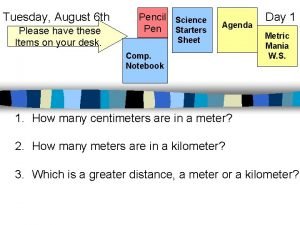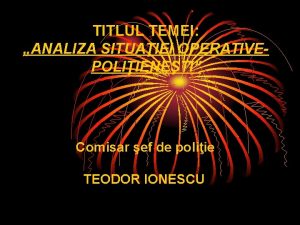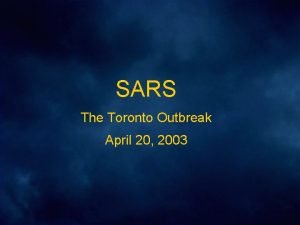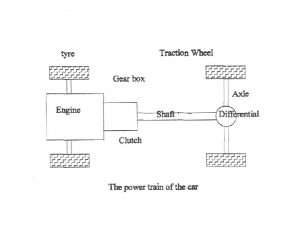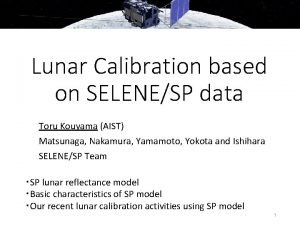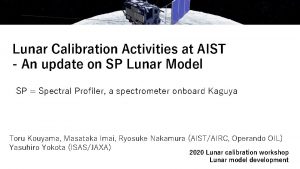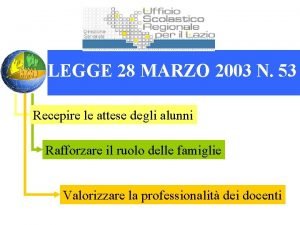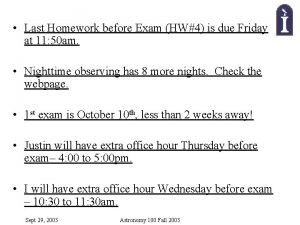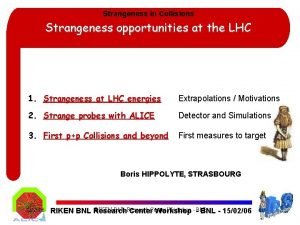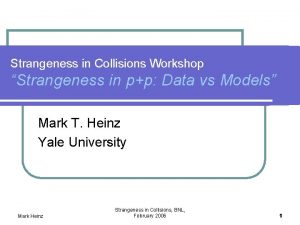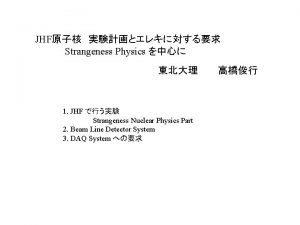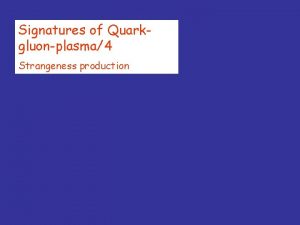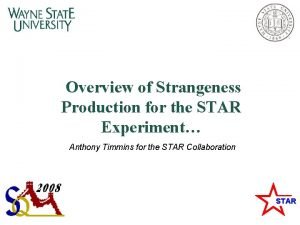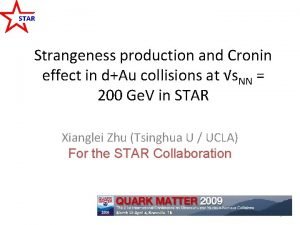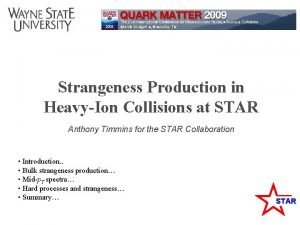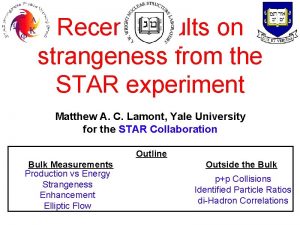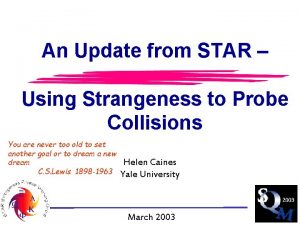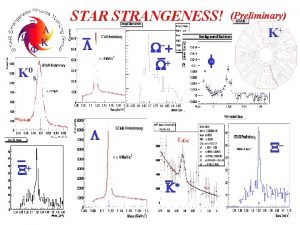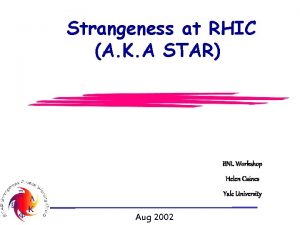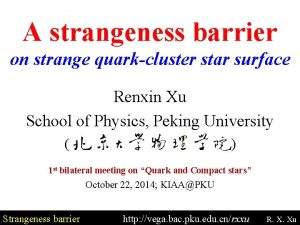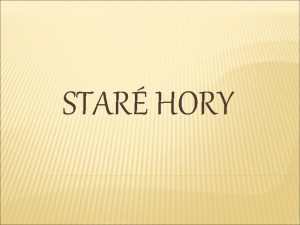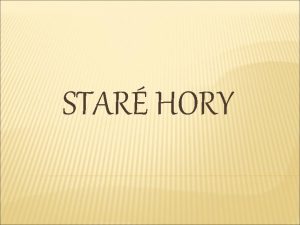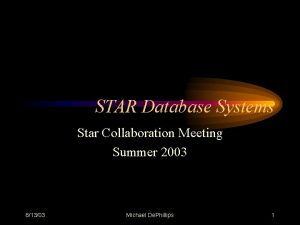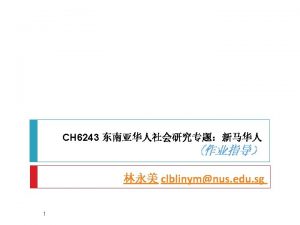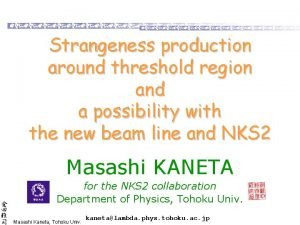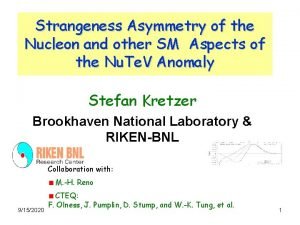STAR Strangeness Summary 2003 STAR Strangeness Summary 2003





























































- Slides: 61

STAR Strangeness Summary 2003 STAR Strangeness Summary - 2003

130 Ge. V Data All strange particles seem to increase linearly with h. Helen and Rene No step. STAR functions, no. Summarybig surprises Strangeness 2003 2

Statistical models What about the resonances? !? As we know beautiful agreement between models and data Helen and Rene STAR Strangeness Summary- 2003 3

Centrality Systematics of Chemistry Appears to be saturation of strangeness Helen and Rene STAR Strangeness Summary- 2003 4

Thermal freeze-out at 130 Ge. V Assume r= s(r/R) Tfo - ( ), 1 and 2 contours • , ( ? ): Show different thermal freeze-out behaviour: , K, P, STAR Preliminary Helen and Rene • , K, P, : Common thermal freeze-out at T~100 Me. V and < >~0. 52 c Early freeze-out due to smaller cross-section ? Radial flow developing at early times? , K, P, STAR Strangeness Summary- 2003 5

<pt> vs Centrality , K, p - <pt> increase with centrality - Heavy mass increase faster All consistent with radial flow differently – Early freeze-out too? Helen and Rene seems to flow. STAR Strangeness Summary- 2003 6

STAR Strange Spectra @ 200 Ge. V STAR Preliminary K* K 0 s preliminary Preliminary STAR Prelimin ary K preliminary Helen and Rene STAR Strangeness Summary- 2003 7

B/B Ratios All data: • ratios from raw yields densities in all 3 collision data Helen and Rene Similar net baryon STAR Strangeness Summary- 2003 8

/ ratio – Flat in pt • STAR is azimuthally symmetric so we can extract the anti-baryon to baryon ratio without an efficiency or acceptance correction 0 -10% Central @200 Ge. V • ▪ + X- and X+ uncorrected Yields in Pt bins • On a 0. 7<pt<4. 0 Ge. V/c range, no observed dependence of the ratio with pt and centrality Helen and Rene 0 -10% Central @200 Ge. V 0. 83+/-0. 02(stat)+/-0. 07(syst) X+ / X- ratio for Central data in Pt bins STAR Strangeness Summary- 2003 9

Improvements with 200 Ge. V Data STAR Preliminary 18% extrapolation Better stats. and measurements + STAR Preliminary + K+ Much higher reach on pt STAR Preliminary Finer centrality binning Helen and Rene STAR Strangeness Summary- 2003 10

Invariant mass spectra 200 Ge. V 60 -80% Xi - Axi S/N=1. 8 S/N=2. 15 20 -40% Xi – Axi S/N=2. 6 S/N=2. 89 0. 7 < pt < 6. 0 | Rp | < 0. 75 Helen and Rene 40 -60% Xi – Axi S/N=1. 74 S/N=1. 92 10 -20% Xi – Axi S/N=1. 15 S/N=1. 2 0 -10% Xi – Axi S/N=1. 4 S/N=1. 55 Centrality 0 -5% 28113. 4 +/-282. 0 22877. 9 +/-246. 9 5 -10% 20541. 8 +/-213. 9 17255. 8 +/-189. 0 10 -20% 6491. 7 +/-131. 6 5217. 7 +/-116. 3 20 -40% 8395. 8 +/-120. 8 7001. 7 +/-108. 5 40 -60% 4121. 2 +/-93. 1 3523. 5 +/-84. 0 60 -80% 1192. 8+/49. 4 1051. 5+/44. 7 Reconstructed X- and X+ as functions of centrality range STAR Strangeness Summary- 2003 11

Mt corrected spectra for , , , and + Mt spectra for , , -, +, -+ + as a function of centrality, from the most central at the top to the most peripheral at the bottom. Scale factors have been applied for a best spectra visualisation. The black lines are boltzmann fits. • Boltzmann fit to , , -, +, and -+ +. Stat errors only • Feed-down correction applied for • For ~2% Helen and Rene STAR Strangeness Summary- 2003 12

Inverse slope and <pt> 200 Ge. V • Same <pt> for - and + • Constant with centrality • Slight decrease for most peripheral <Nch> Deviates from a transverse flow picture. Earlier freeze-out? Reflect of partonic flow ? Helen and Rene STAR Strangeness Summary- 2003 13

Thermal freeze-out conditions 200 Ge. V The mt spectra can also fit to a hydrodynamically function : Schnedermann, Sollfrank &Heinz Nucl-th/9307020 Expansion of particles from a thermal expanding source with a transverse flow velocity < t> at Tfo Different thermal behavior than , K and p Helen and Rene STAR Strangeness Summary- 2003 14

Summary vs Centrality Helen and Rene STAR Strangeness Summary- 2003 15

Ratio centrality dependence and dep. on |s| Ratios / and / in Au+Au collisions at 200 Ge. V as a function of centrality. For the most central data, a comparison is made to the same ratios at SPS (blue stars) and to thermal models. The horizontal bars give the bin space. -/ at RHIC – 200 Ge. V -/ at SPS W/ - at SPS -/ PBM - thermal model -/ at PBM - thermal model Helen and Rene - with centrality almost flat production increasing with centrality (agreement with fig. 4) / and / increase with centrality, suggesting an increase of gs from peripheral to central AA collisions. STAR N Strangeness Summary- 2003 ch 16

Ratio centrality dependence and dep. on |s| • : Nonlinear function of Nch, 2 degrees polynomial ? /Nch flat with centrality Strangeness enhancement and saturation from peripheral to central collisions. (similar when compared to SPS results) Helen and Rene The drop of d. Ndy/Nbin is smaller for than and pbar due to the enhancement effects. STAR Strangeness Summary- 2003 17

d. N/dy - Exponential fit 0 -5% 10 -20% 20 -40% 40 -60% 60 -80% d. N/dy 2. 64+/-0. 08 1. 56+/-0. 08 0. 81+/-0. 03 0. 26+/-0. 01 0. 059+/-0. 005 d. N/dy 2. 12+/-0. 07 1. 23+/-0. 06 0. 65+/-0. 02 0. 22+/-0. 01 0. 059+/-0. 006 Reminder : RHIC @130 Ge. V: most central (0 -10%) 2. 16+/-0. 09 Xi/evt SPS @17. 4 Ge. V WA 97 : 1. 5+/-0. 1 Xi/evt ; 0. 37+/-0. 06 Axi/evt Boltzmann fit 0 -5% 10 -20% 20 -40% 40 -60% 60 -80% d. N/dy 2. 52+/-0. 08 1. 48+/-0. 07 0. 78+/-0. 03 0. 25+/-0. 01 0. 057+/-0. 005 d. N/dy 2. 03+/-0. 06 1. 16+/-0. 06 0. 62+/-0. 02 0. 21+/-0. 01 0. 058+/-0. 05 Helen and Rene STAR Strangeness Summary- 2003 18

Corrected - and + yields / centrality At mid-rapidity… 2=3. 66 2=0. 83 <Nch> Linear fit Helen and Rene <Nch> 2 degrees polynom fit STAR Strangeness Summary- 2003 19

Resonances and Survival Probability K* • Decays in fireball mean daughter tracks K measured can rescatter destroying part of signal K* K lost K* K K Chemical freezeout time • Initial yield established at chemical freeze-out Kinetic freezeout • Rescattering also causes regeneration which partially compensates • Ratio to “stable” particle reveals information on behaviour and timescale K measuredbetween chemical and kinetic freeze-out Two effects compete – Dominance depends on decay products and lifetime Helen and Rene STAR Strangeness Summary- 2003 20

Resonance Ratios STAR Preliminary Au-Au and p-p √s=200 Ge. V -> (1. 3 fm/c) K* -> K ( 4 fm/c) (1520) ->p. K (13 fm/c) Ur. QMD: signal loss SPS Helen and Rene K*(892) (1520) (17 Ge. V) [1] 66% 50% RHIC (200 Ge. V) [2] 55% 30% STAR Strangeness Summary- 2003 21

<pt> and p-p collisions K 0 s STAR Preliminary p-p 200 Ge. V Power Law fits STAR Preliminary p+p @ s = 200 Ge. V Helen and Rene STAR Strangeness Summary- 2003 22

<pt> and p-p collisions K 0 s Helen and Rene Evidence for mini-jets? STAR Strangeness Summary- 2003 23

Strangeness Enhancement Helen and Rene STAR Strangeness Summary- 2003 24

Strangeness Suppression Same plot as previous slide just normalized to top Au-Au emphasizes more common wisdom that yields are suppressed in p-p not enhanced in Au-Au Helen and Rene STAR Strangeness Summary- 2003 25

Min-bias identified particle v 2 at 200 Ge. V • v 2 appears to saturate at ~0. 13 for KS and ~0. 20 for with the saturation setting in at different p. T. • Conversion of coordinate to momentum anisotropy: at or near the hydrodynamic limit (zero path length/totally opaque). Helen and Rene STAR Strangeness Summary- 2003 26

Identified particle v 2 at low p. T PHENIX: nucl-ex/0305013 STAR: nucl-ex/0306007 : STAR Preliminary • Hydro models assuming local thermal equilibrium describe the species dependence of v 2 well. • Increase of integrated v 2 with mass is suggestive of significant collective motion. Helen and Rene STAR Strangeness Summary- 2003 27

K 0 s Correlations X 10 K 0 s Enough K 0 s/event to perform HBT measurement C 2 ry a n i lim e r M (Ge. V/C 2) P Fit to a gaussian R A ST l = 0. 5 0. 1 Rinv = 5. 8 0. 7 Helen and Rene STAR Strangeness Summary- 2003 28

HBT vs mt Wiedemann and Heinz expect: to drop with 1/mat (a ~ 0. 5) due to collective flow. Rinv for K 0 s does not seem to obey same mt scaling Need more detailed studies before conclusive statement made Helen and Rene STAR Strangeness Summary- 2003 29

Observing Hadronization Timescale The Premise: STAR pairs Preliminaryare created • Charge/anti-charge in Au-Au space-time Kaonsclose 200 Ge. V • Early creation (hadron gas) • Longitudinal expansion and rescattering pulls pairs apart – Loose correlation in rapidity • Late creation (after deconfined phase? ) • Pairs only form at hadronization, late in collision • Less rescattering – Less loss of correlation in rapidity Balance function tries to measure this correlation Width of balance function then related to time between hadronization and freeze-out Helen and Rene STAR Strangeness Summary- 2003 30

Balance Function at 200 Ge. V STAR Preliminary Smooth transition from p-p to Au-Au K narrower than Narrower widths for more central data: Delayed hadronziation? Helen and Rene STAR Strangeness Summary- 2003 31

d-Au Results STAR nucl-ex/0309012 Rd. Au vs. p. T for p, K and p 1) Nuclear modification factor: particle type or mass (Rcp for Ks, , and ). Note: within p. T ~ (0. 7 -2 Ge. V/c), proton Rd. Au is larger than that of Kaon and Pion! 2)Suppression observed in Au+Au: how about in d+Au? 3) Transverse momentum production: <p. T> versus multiplicity Helen and Rene STAR Strangeness Summary- 2003 32

Ks and invariant mass in d. Au Ks + bar Minbias data. Without background subtraction. Blue arrows point to the real mass values. Helen and Rene STAR Strangeness Summary- 2003 33

Charged kaon ratio – 3 centralities. Examples shows that statistics in data sufficient for smooth spectra in all centrality bins… C. M. Helen and Rene STAR Strangeness Summary- 2003 34

Transverse mass spectra STAR Preliminary Ø|rapidity|<1. 0; Measured Pt range: 0. 4 Ge. V~6. 0 Ge. V Øpower law function fits well in d. Au collisions ØStatistical errors only. Error bars(10%) are smaller than the size of data points. Helen and Rene STAR Strangeness Summary- 2003 35

Rcp for Ks, and f in d. Au STAR Preliminary Helen and Rene ØStatistical error only; ØBoth reconstruction efficiency and vertex finding correction included; Ø Rcp is flat at 1. 4 when pt > 2 Ge. V/c; ØKs Rcp is flat at 1. 2 when pt > 2 Ge. V/c; Ø Rcp is closer to Ks than . STAR Strangeness Summary- 2003 36

K- corrected spectrum (minbias). Helen and Rene STAR Strangeness Summary- 2003 37

Comparison of all kaon spectra. 4 methods! K 0 s slightly low? Being checked with 2 nd analysis. Helen and Rene STAR Strangeness Summary- 2003 38

Central to minbias ratio. Small enhancement, related to Cronin effect. Consistent for two particle (different analyses). Will form Rd. Au once proper normalization finalized (also in p+p). Helen and Rene STAR Strangeness Summary- 2003 39

Corrected anti- p. T spectrum. Exponential fit Helen and Rene STAR Strangeness Summary- 2003 40

Summary of Low pt Observations – Particle production is large • Small change from 130 to 200 Ge. V – Vanishing anti-baryon/baryon ratio (0. 7 -0. 8) • close to net baryon-free but not quite, ~same for 130, 200 and pp – Particles ratios suggest chemical equilibrium • Tch 170 Me. V, mb<50 Me. V near lattice phase boundary – Resonances appear strongly affected by rescattering in medium • Need Rescattering and regeneration more Au-Au data to get compete clearer picture – System exhibits collective behavior (radial + elliptic flow) • strong internal pressure that builds up very early • Some particles appear to freeze-out at earlier times – The system appears to freezes-out very fast • Balance function results – Large system at freeze-out • K 0 s appear to break mt scaling Overall picture: system appears to be in equilibrium, but it explodes and. Rene hadronizes rapidly STAR Strangeness Summary- 2003 Helen and 42

Strange Particles at High pt preliminary Mass dependence of the transverse expansion, change in shape at higher pt. Helen and Rene STAR Strangeness Summary- 2003 43

“Soft” vs “Hard” Physics “Soft” Physics “Hard” Physics - Npart: Number of participants number of incoming nucleons (participants) in the overlap region Nbin: Number of binary collisions number of equivalent inelastic nucleon-nucleon collisions Nuclear Modification Factor: N-N cross section <Nbinary>/ inelp+p If no “effects”: R < 1 in regime of soft physics R = 1 at high-pt where hard scattering dominates Helen and Rene STAR Strangeness Summary- 2003 44

p-p Inclusives Measurement Real p-p measurement no longer have to use UA 1 results Helen and Rene STAR Strangeness Summary- 2003 45

Charged Hadrons @ 200 Ge. V (h++ h-)/2 Real RAA Measurement! Still clear evidence for high pt suppression in central collisions Suppression factor ~constant for 6<pt<12 Ge. V/c Helen and Rene Evidence of partonic. STAR energy loss in the medium? Strangeness Summary 2003 46

Identified Particle Measurements A significant difference is seen between the pt dependence of K 0 S and Λ RAA. preliminary For pt from 1. 8 -3. 2 Ge. V/c in central collisions Λ production approximately follows Nbin scaling. At higher pt however, a suppression with respect to Nbin scaling is seen for both – “standard” fragmentation? preliminary Baryon/Meson difference or merely mass? Helen and Rene STAR Strangeness Summary- 2003 47

Rcp for h-, K, , , W, and f follows K not . Baryon meson effect. Not mass Helen and Rene STAR Strangeness Summary- 2003 48

Minimum bias v 2 Au-Au 200 Ge. V At high pt Hydro-like behaviour stops Deviation occurs earlier For K 0 s than for preliminary Helen and Rene Again mass or baryon/meson dependence? STAR Strangeness Summary- 2003 49

V 2 at High Mtm (J. Jia) (Voloshin) • A particle dependence and saturation in all three centrality intervals. • Hard-sphere, infinite-opacity limit for surface emission can’t reach the measured v 2 requires a dynamic expansion of strongly interacting matter. Helen and Rene STAR Strangeness Summary- 2003 50

Helen and Rene In this scenario we can infer the value of the parton v 2 in the relevant 51 p. T region (~7%). STAR Strangeness Summary 2003 51

Scaling Works for p, K, , What about ? Helen and Rene STAR Strangeness Summary- 2003 52

Scaling Breakdown Lower limit: p. T/n<0. 6 Ge. V/c 2 Upper limit: undetermined* *RCP suggest a breakdown for p. T/n>1. 7 Ge. V/c 2 Helen and Rene STAR Strangeness Summary- 2003 53

Particle spectra: Baryon enhancement at intermediate p. T. • Two component shape evident in kaon and pion spectra. • The pion and kaon shape change occur at similarly small p. T (near 1. 5 Ge. V/c). • For proton and the spectra don’t exhibit such a twocomponent shape. Helen and Rene STAR Strangeness Summary- 2003 54

Two component spectra fits: Hydrodynamic inspired model and p. QCD power-law. The crossover from a soft to hard shape is species dependent: p. T, cross(kaon) ≈1. 5 Ge. V/c, Helen and Rene p. T, cross( ) ≈ 3– 5 Ge. V/c ? STAR Strangeness Summary- 2003 55

The p. T Scale of RAA and v 2 for KS and The saturation of v 2 and fall of RCP are correlated. In a scenario with partonic energy loss followed by unmodified fragmentation, a larger v 2 would be associated with a smaller RCP. At intermediate p. T: species dependence contradicts a simple partonic energy loss and unmodified fragmentation picture. Helen and Rene STAR Strangeness Summary- 2003 56

Topology Analysis Spectra: Ks 0 and • Centrality bins chosen w/r to RCP • Comparison meson/baryon yields ! Helen and Rene STAR Strangeness Summary- 2003 57

B/B ratios - motivation Helen and Rene STAR Strangeness Summary- 2003 58

Non Strange Mixed Ratio p/ Consistent with PHENIX data @ 200 Ge. V. Helen and Rene No turnover from hydro Good Job for Soft+Quench STAR Strangeness Summary- 2003 59

/K 0 s for different centralities • UA 1 data from p+p collisions at s= 630 Ge. V. • Very good agreement between UA 1 and peripheral Au+Au. • Large baryon enhancement, relative to mesons, in central Au+Au. Helen and Rene STAR Strangeness Summary- 2003 60

/K 0 s compared to models Gyulassy, Vitev Helen and Rene Recombination/Coales cence STAR Strangeness Summary- 2003 61

Summary of High pt Observations • Strong hadronic suppression Onset at different times for different species • Azimuthal anisotropy at high pt Plateau occurs at different times for different species • Suppression of back-to-back hadron pairs large parton energy loss and surface emission? Need d-Au disentangle initial state effects in jet production (shadowing, Cronin enhancement) resolution of jet quenching picture J/ and open charm: direct signature of deconfinement? Helen and Rene STAR Strangeness Summary- 2003 62
 Bearing gifts we traverse afar
Bearing gifts we traverse afar Ao* algorithm in artificial intelligence
Ao* algorithm in artificial intelligence What does star for star events stand for
What does star for star events stand for Tutorial word 2003
Tutorial word 2003 Wpc2003
Wpc2003 Sbs 2003 cals
Sbs 2003 cals Windows 2003 sp
Windows 2003 sp Where the red fern grows 2003
Where the red fern grows 2003 2003 ub
2003 ub Visio 2003 viewer
Visio 2003 viewer Upgrade 2003 to 2008
Upgrade 2003 to 2008 R v ruffell 2003
R v ruffell 2003 The composition of the solar nebula was 98%
The composition of the solar nebula was 98% Tesla motors 2003
Tesla motors 2003 Devellis
Devellis Four seasons korean movie
Four seasons korean movie 2003 ub
2003 ub S76 soa 2003
S76 soa 2003 Legge 53 2003 sintesi
Legge 53 2003 sintesi 2003 ub
2003 ub Outlook express 2003
Outlook express 2003 Oais iso
Oais iso Oais iso 14721
Oais iso 14721 2003 ub
2003 ub Microsoft access 2003 tutorial
Microsoft access 2003 tutorial La ley 850:
La ley 850: Cxxix 2003
Cxxix 2003 28 maret 2003 hari apa
28 maret 2003 hari apa Pn-en 10020:2003
Pn-en 10020:2003 Ellis 2003
Ellis 2003 Sap 2003
Sap 2003 Ewles and simnett planning model 2003
Ewles and simnett planning model 2003 Txline 2003
Txline 2003 Learning curves 2003
Learning curves 2003 Windows storage server 2003
Windows storage server 2003 Declaración sobre seguridad en las américas 2003
Declaración sobre seguridad en las américas 2003 Decs order no. 11 s. 1987
Decs order no. 11 s. 1987 Copyright 2003
Copyright 2003 Uel zeus ocupa o trono do universo
Uel zeus ocupa o trono do universo Power outage 2003
Power outage 2003![Re liveri [2006] qca 152 Re liveri [2006] qca 152](data:image/svg+xml,%3Csvg%20xmlns=%22http://www.w3.org/2000/svg%22%20viewBox=%220%200%20200%20200%22%3E%3C/svg%3E) Re liveri [2006] qca 152
Re liveri [2006] qca 152 Xxxxx to
Xxxxx to 2003 2023
2003 2023 Net server 2003
Net server 2003 Ms project 2010 tutorial
Ms project 2010 tutorial T. trimpe 2003 http://sciencespot.net/
T. trimpe 2003 http://sciencespot.net/ 29/10/2003 lunaf
29/10/2003 lunaf Answers
Answers T trimpe
T trimpe 2003 april 20
2003 april 20 Sami yusuf 2003
Sami yusuf 2003 23 luglio 2003
23 luglio 2003 Daimler chrysler 2003
Daimler chrysler 2003 Meridel lesueur, new masses, january 1932
Meridel lesueur, new masses, january 1932 Max ciccotosto
Max ciccotosto Oficce 2003
Oficce 2003 282003 color
282003 color Greenberg dan baron 2003
Greenberg dan baron 2003 Lunaf.com 13.04.2003
Lunaf.com 13.04.2003 Lunaf.com 13.04.2003
Lunaf.com 13.04.2003 Legge 28 marzo 2003 n. 53
Legge 28 marzo 2003 n. 53 Moon 29.09.2003
Moon 29.09.2003








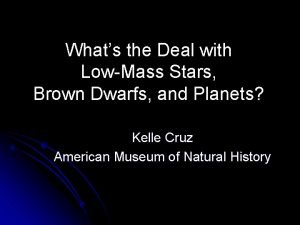



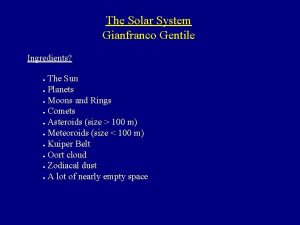
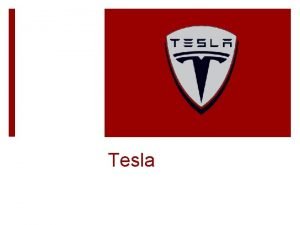
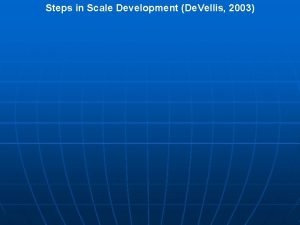

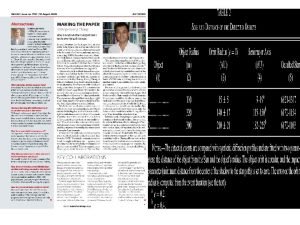


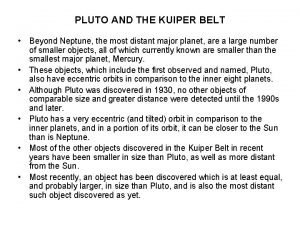


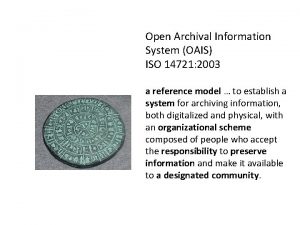
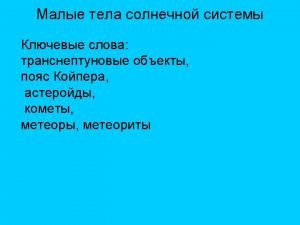








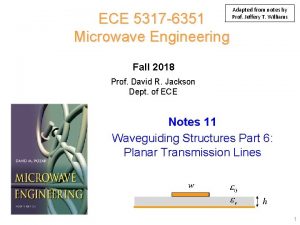

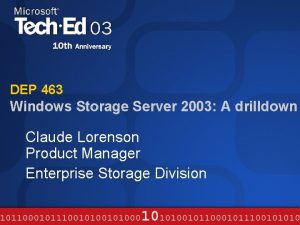
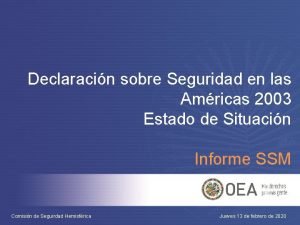

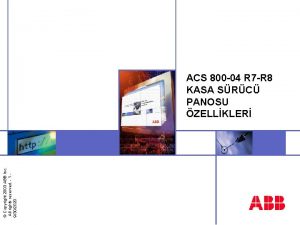

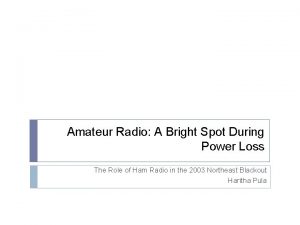
![Re liveri [2006] qca 152 Re liveri [2006] qca 152](https://slidetodoc.com/wp-content/uploads/2020/10/1024173_0ab07c7fa5fe15bbad1bb1a43f32eeb0-300x225.jpg)




